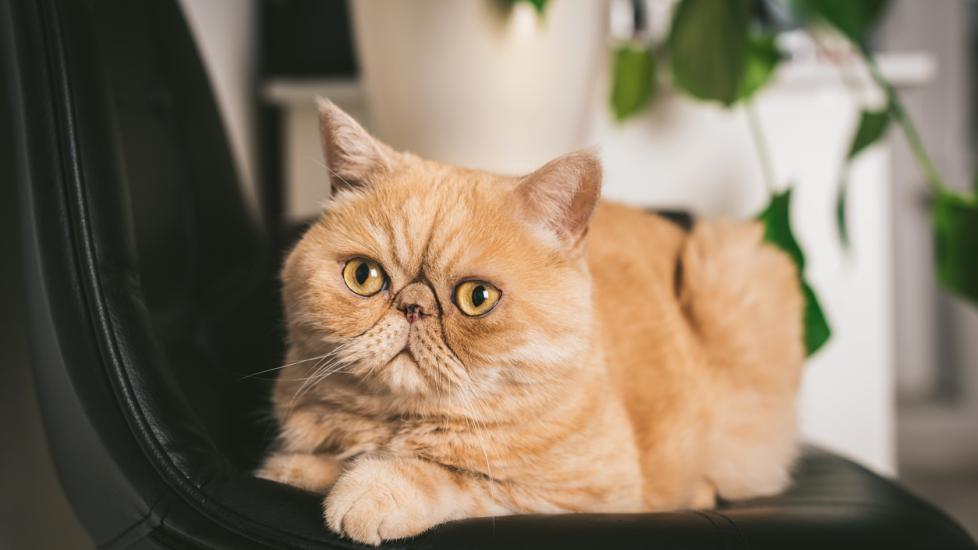Yellow Skin (Jaundice) in Cats
What is Jaundice in Cats?
Jaundice (also called “icterus”) is a yellowing of the skin of cats that can be caused by a variety of medical conditions. The yellowing of the skin seen in jaundice is caused by a build-up of waste products in the bloodstream. Most commonly, these waste products are either byproducts of some type of liver disease, or they may come from the bloodstream if the red blood cells are being broken down too quickly.
Symptoms of Jaundice in Cats
Jaundice in cats is, by definition, yellowing of the skin. It’s most easily seen when looking at the whites of your cat’s eyes, the lightly haired area inside of the ears, or along the lips and back of the hard palate (roof) in the mouth. Most cats experiencing jaundice are also not feeling well, so they may be sluggish, not eating as much, and vomiting frequently.
The following additional signs may appear with jaundice:
-
Yellowish discoloration of the skin
-
Fever
-
Abdominal pain
-
Loss of appetite (anorexia)
-
Paleness
-
Change in color of urine and feces (orange colored)
-
Increased frequency (polyuria) and volume of urine
-
Increased thirst (polydipsia) and consumption of water
-
Mental confusion in advanced cases
-
Weight loss
-
Bleeding (especially in cats with advanced liver disease)
Causes of Jaundice in Cats
There are many diseases that can cause jaundice in cats. Some of these are from “intrahepatic causes,” meaning they arise from within the liver. Jaundice is also commonly caused by triaditis, or inflammation of the intestinal tract, pancreas, and liver. This condition is associated with inflammatory bowel disease in cats.
Other causes are “extra-hepatic,” meaning they are caused by an obstruction of the ducts and outflow of bile from the liver. Some of these causes include:
-
Excess destruction of red blood cells, often from diseases of the bloodstream such as cytauxzoonosis (from ticks).
-
Immune-mediated hemolytic anemia (IMHA), in which the body attacks its own red blood cells.
-
Tumors.
-
Buildup of excess fat in the liver.
-
Any condition that interferes with the secretion of bilirubin.
-
Gall stones in the ducts surrounding the liver (very rare)
How Veterinarians Diagnose Jaundice in Cats
In most instances, your vet will see jaundice during a physical examination. Veterinarians check the color of the sclera (the whites of the eyes) and pinnae (ears) as part of a routine physical examination. If jaundice is suspected based on the visual exam, a total bilirubin blood test will be conducted. In cats with jaundice, total bilirubin will be elevated.
Additional blood tests will generally help the vet identify the problem with either the hepatic (liver) or bloodstream and identify an underlying cause.
Treating Jaundice in Cats
Treatment varies widely depending on the cause of the jaundice. In many instances, medications will be used to improve liver function (if this is the root cause) or to slow the destruction of red blood cells if the problem lies in the bloodstream.
Recovering from Jaundice in Cats
Many animals recover quickly once the source of the jaundice is identified and a treatment plan is created. Others with more serious conditions will likely require more time to recover. Some pets with serious liver disorders can require weeks of intensive treatment to be on the mend.
Jaundice in Cats FAQs
How long does it take for jaundice to go away?
How long it will take for the jaundice to resolve depends on the underlying problem. Many cats will respond quickly to diagnosis and treatment, with the jaundice resolving within days to weeks. Some cats will have more serious conditions and may take weeks or even months to respond.
How does a pet parent care for a cat with jaundice?
Cats with liver failure need an extremely high level of care at home due to the instability of this condition. For example, cats may bleed at any time. If you notice bleeding, you should immediately call your veterinarian. In addition, if you see any changes to your cat’s feces or urine, advise your vet.
Can jaundice in cats be cured?
Depending on the underlying condition, many cases of jaundice can be readily diagnosed and cured, while some cases may take longer. Only after a complete physical exam and some diagnostic testing will your veterinarian be able to give you a prognosis and create a treatment plan.
Is jaundice a serious condition?
Jaundice in the cat is considered a serious condition and should be diagnosed and treated promptly.
Featured Image: iStock.com/Arx0nt
